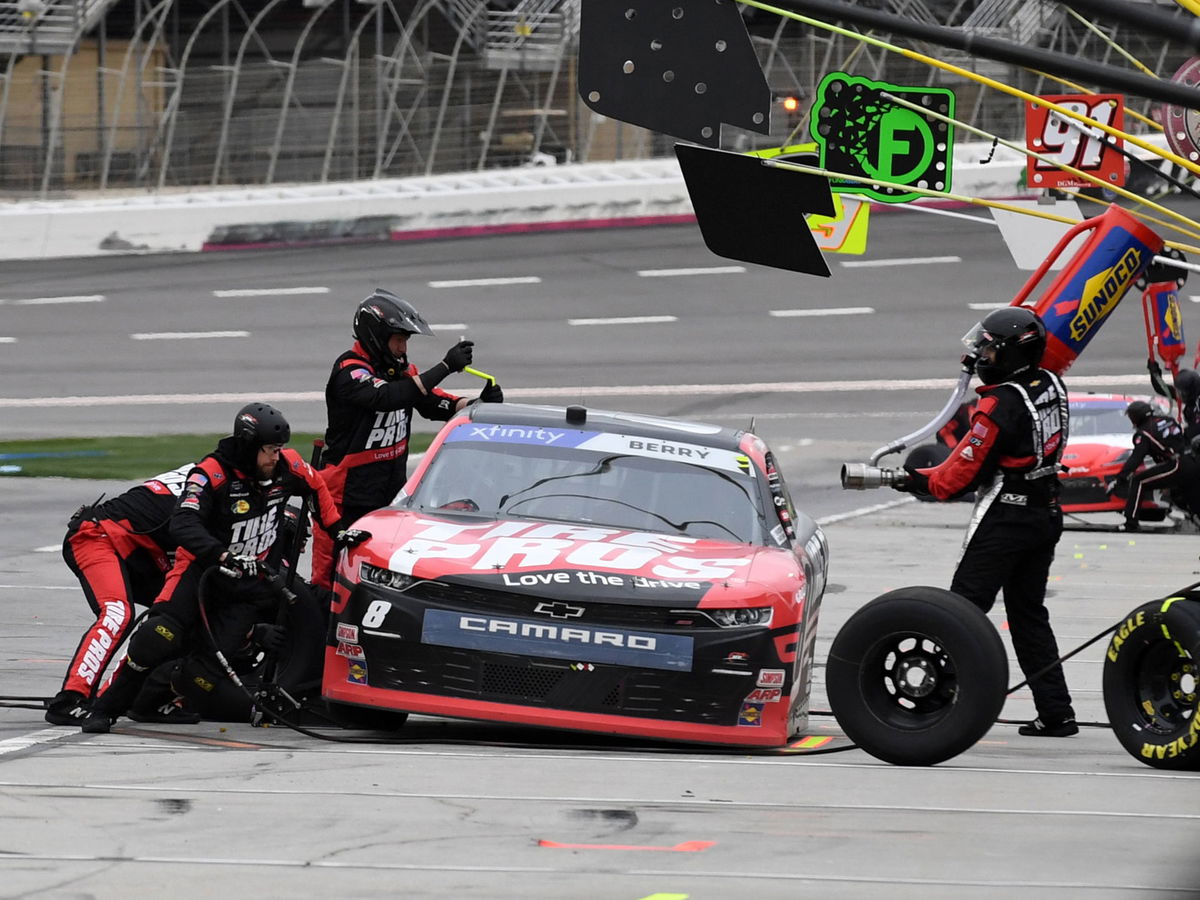
Imago
ATLANTA, GA – MARCH 18: The crew of Josh Berry 8 JR Motorsports Tire Pros Love The Drive Chevrolet services the car during the NASCAR, Motorsport, USA Xfinity Series RAPTOR King of Tough 250 on March 18, 2023, at Atlanta Motor Speedway in Hampton, GA.Photo by Jeffrey Vest/Icon Sportswire AUTO: MAR 18 NASCAR Xfinity Series RAPTOR King of Tough 250 Icon230318422

Imago
ATLANTA, GA – MARCH 18: The crew of Josh Berry 8 JR Motorsports Tire Pros Love The Drive Chevrolet services the car during the NASCAR, Motorsport, USA Xfinity Series RAPTOR King of Tough 250 on March 18, 2023, at Atlanta Motor Speedway in Hampton, GA.Photo by Jeffrey Vest/Icon Sportswire AUTO: MAR 18 NASCAR Xfinity Series RAPTOR King of Tough 250 Icon230318422
Pit stops in NASCAR have long been a mesmerizing spectacle of precision and lightning-fast teamwork. But did you know that the evolution of lug nut technology has played a crucial role in shaping the sport as we know it? Joe Gibbs Racing (JGR) recently shared a fascinating Instagram reel tracing this evolution, spotlighting the shift from the traditional five-lug nut setup to the modern, single-lug nut system introduced with NASCAR’s Next-Gen car. It’s a tale of innovation, speed, and — most importantly — safety.
Watch What’s Trending Now!
But why the change, and how did we get here? The history of lug nut tech is packed with clever tactics, some unspoken rule-bending, and eventually, the inevitable overhaul for better safety and performance.
ADVERTISEMENT
From Dealership Wheels to Pit Road Speed Demons
In NASCAR’s early days, race cars were nearly identical to the ones you could buy at your local dealership. That meant they came with the same basic, multi-lug wheels. Tire changes were rudimentary, using simple lug wrenches to swap wheels during pit stops. This system worked fine until the 1950s when longer races and more frequent pit stops demanded faster methods. Enter the air gun, a game-changer that made swapping tires much more efficient.
But the real revolution began in 1970. During the pit crew competition at Rockingham Speedway, one clever team decided to glue lug nuts on the wheels. This eliminated the hassle of manually placing each nut during a stop, shaving valuable seconds off pit times. It became a standard practice, and for decades, the goal was simple: faster stops and innovative ways to gain any competitive edge.
View this post on Instagram
ADVERTISEMENT
However, teams quickly realized that hitting all five lug nuts perfectly every time wasn’t always necessary. If they could tighten three or four well enough, it would still hold the wheel in place — but only just barely. This strategy saved time but created a major safety risk. Loose wheels were a frequent, terrifying sight on the track.
By the 2010s, NASCAR was in a battle to clamp down on loose wheels. Officials stood watch over pit stops, monitoring every move like hawks to make sure no team cut corners. In 2015, they even ramped up their surveillance with new technology and cameras, but it still wasn’t enough. Despite these efforts, wheels were flying off, and in 2016, NASCAR had to dish out heavy penalties for loose lug nuts.
ADVERTISEMENT
Safety Concerns and the Birth of the Next-Gen Single Lug
Despite all the monitoring, lug nut technology itself remained largely unchanged — until 2022, when the Next-Gen car rolled into town. The wheels got bigger, moving from 15 inches to 18 inches, and were made of aluminum instead of steel to reduce weight. This design mirrored what you’d see on production vehicles, but there was a problem: one loose lug nut could wreak havoc on these new, lighter wheels.
The solution? A single large lug nut. It sounds simple, but it completely redefined pit stops. With just one lug to tighten, the risk of a wheel flying off due to an incomplete fastening nearly vanished. It was a crucial update, one that allowed pit crews to focus all their energy on getting that single lug locked down securely, keeping drivers and fans safe while ensuring pit stops stayed blazing fast.
ADVERTISEMENT
Pit stops are only going to get faster and faster as the years go by. Teams are always looking for new strategies and loopholes to shave off that last 100th of a second to make a difference. Unsurprisingly, Homestead was witness to the fastest pit stop in NASCAR history. Yes, the all-time record was broken last week. Carson Hocevar of Spire Motorsports had an 8.29-second pit stop as he drove to a solid P9 finish at Miami. Stewart-Haas Racing held the previous record, and Chase Briscoe at Kansas Speedway with an 8.45-second pit-stop.
Joe Gibbs Racing’s deep dive into the history of lug nuts didn’t just serve as a trip down memory lane — it’s a reminder of how small changes can have a massive impact on the sport. From gluing lug nuts in the ‘70s to NASCAR officials scrutinizing every pit stop and now the streamlined Next-Gen approach, it’s a testament to constant innovation in the name of speed and safety.
As the sport continues to evolve, the ever-changing technology that runs it will keep playing a pivotal role in the NASCAR spectacle. So next time you watch a tire change unfold in seconds, remember, it’s not just about muscle and speed — it’s the product of decades of clever engineering and adapting to keep drivers safe and races thrilling.
ADVERTISEMENT
ADVERTISEMENT
ADVERTISEMENT
ADVERTISEMENT

